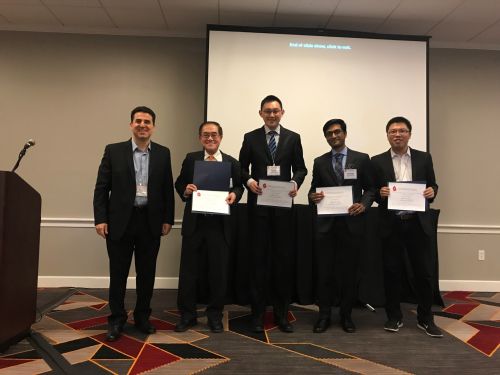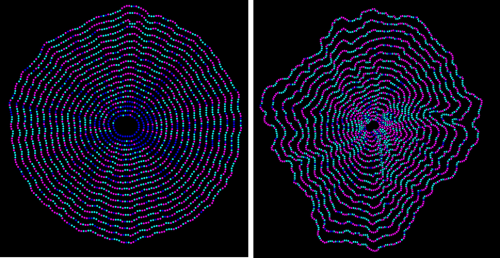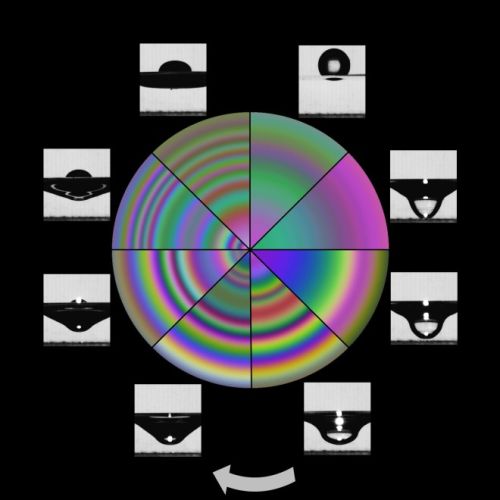
Law Combustion Group Wins Awards at 2017 National Combustion Meeting
During the recent (April 23 - 26, 2017) US-National Combustion Meeting held at the University of Maryland, members of MAE’s Law Combustion Group received several awards.
George Markstein Best paper Award
Sheng Yang (grad student; third from left in photo), Abhishek Saha (research associate; fourth), Wenkai Liang (grad student; fifth), Fujia Wu (former grad student; not present) and Chung K. Law (Robert H. Goddard Professor; second) received the 2016 George H. Markstein Best Paper Award for their paper “Extreme Facilitation of Flame Propagation by Turbulence through Differential Diffusion” presented at the 2016 Eastern States Section Meeting of Combustion Institute. Dr. Paul Papas (first), a 1994 graduate of MAE and presently Secretary of the Eastern Section of the Combustion Institute, presented the award.
1st Prize for Technical Merit in the Art Competition
Abhishek Saha (research staff), Sheng Yang (grad student) and Chung K. Law (professor) of MAE won the 1st prize for Technical Merit in the art competition for their artwork entitled “Journey of Curvature in Wrinkled Flames”.

Description of Image
The otherwise regular and smooth surface of an expanding spherical flame in a quiescent environment can be distorted into an irregular and wrinkled morphology either by intrinsic flamefront cellular instability or by external flow turbulence. Under both situations, wrinkling of flame-front becomes stronger as the flame grows, either by the increase in the number of cells or by the larger eddies. While these wrinkled flame-fronts consist of segments with widely varying local curvatures, it is interesting to watch how the curvature locally evolves with time.
Patterns emerge if the instantaneous flame edges at various times colored by the local curvature are superimposed on the expanding flame. Two of such flame patterns are portrayed here. Left: Cellularly unstable laminar flame in quiescent environment; Right: Cellularly stable flame in turbulent environment; with colored dots representing negatively (green), positively (pink) and weakly (blue) curved flame segments. Amidst the beautiful plethora of these colorful dots, evolution of the local curvature can be visualized by tracing the same color dots.
2nd Prize for Artistic Merit in the Art Competition
Xiaoyu Tang (grad student), Abhishek Saha (research associate) and Chung K. Law (professor) of MAE won the 2nd prize for Artistic Merit in the art competition for their art work entitled “Life-cycle of Air Cushion during Droplet Impact”.

Description of Image
In IC engines, deposition of fuel-spray on the engine walls is highly undesirable as it facilitates fuel-rich burning, incomplete combustion and soot formation. Examining a single drop behavior after impacting on a liquid film is useful in understanding and manipulating the impact outcome of bouncing or merging. When a droplet impacts a liquid surface, it traps a microscopic air-film underneath it, which provides a cushioning effect. If the cushioning is strong enough, the droplet can actually bounce from the surface instead of merge with it. The air-film cannot be seen directly, and its miniscule thickness (~1 micron) also cannot be easily measured. In this experiment we shone a white light from the bottom of a wetted glass surface, and observed beautiful interference patterns, just like the rainbow colors on a soap bubble. Different colors represent different thicknesses of the air-film from which the shape and thickness of the air-film can be spatially resolved.
Here, we portray the life-cycle of this air cushion upon droplet impact, with each slice representing a time instant. The impact starts from the 12 o’clock position and time lapses clockwise. The first two slices are when the droplet is approaching the surface and the rest are when it is leaving the surface. Surrounding side-view images show the relative droplet locations.